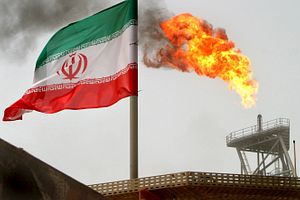On February 5, 2004, during the 25th anniversary of the revolution that ousted the pro-American shah and brought Islamists to power, Iranian and Japanese corporate executives and government officials celebrated the beginning of a new business partnership in the South Pars gas field, the world’s largest.
Gathered in the port city of Assaluyeh, one of Iran’s industrial zones and the field’s “glittering jewel,” representatives from Iranian energy developer Petropars Ltd., Japan’s Toyo Engineering Corporation, and other partners threw coins into the foundations of the plant to inaugurate the project.
A few months before, Petropars had awarded a consortium of companies headed by Toyo Engineering a $1.2 billion contract to implement three of the nearly 30 development projects, or phases, of the South Pars gas field, which Iran shares with Qatar. The consortium was in charge of designing, constructing and providing commissioning services for a natural gas processing plant that would recover the gas from facilities located 105 km offshore.

































